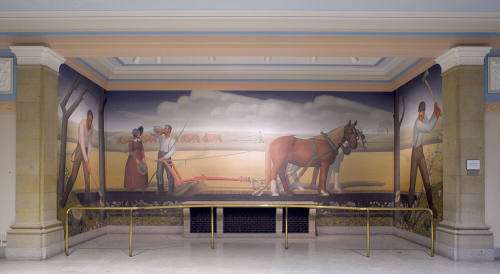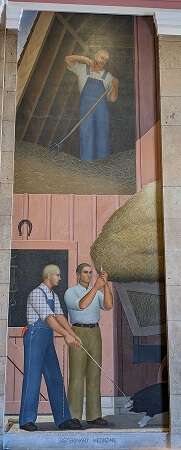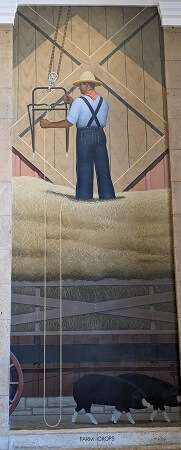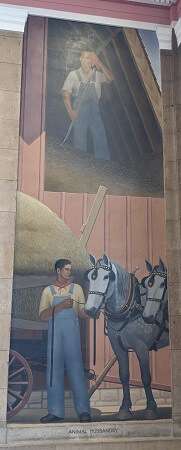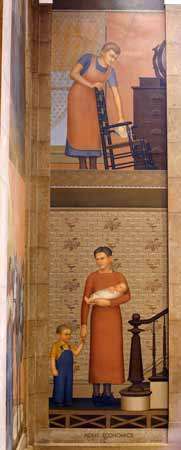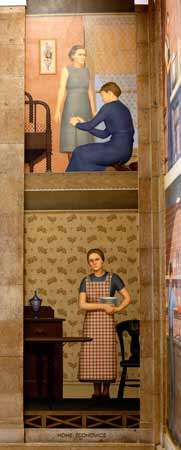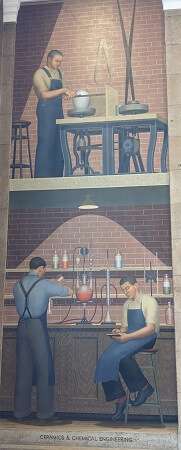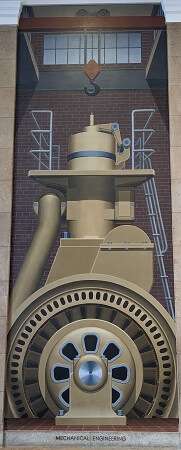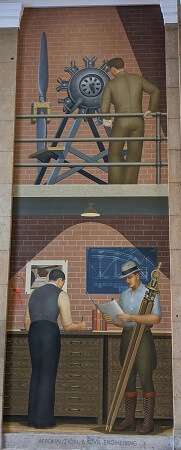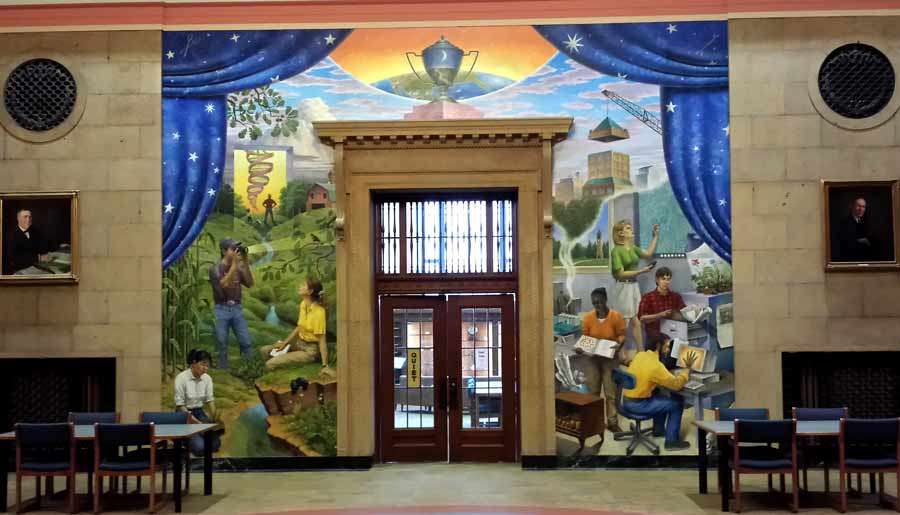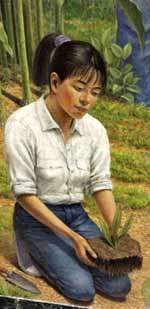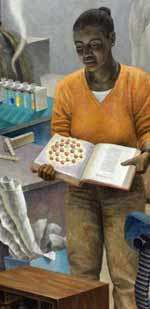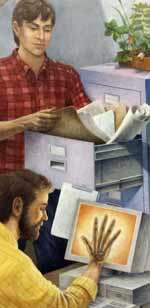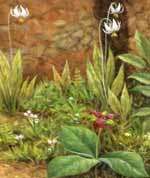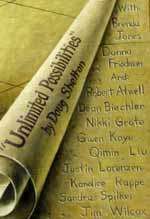Grant Wood Murals
Parks Library is the home of the largest works of art designed by renowned American regionalism artist Grant Wood (1892-1942).
The murals can be found on the first floor and on the walls of the staircase leading to the Upper Lobby of the original building. They are without doubt the major artistic feature of the Iowa State University Library.
All panels are oil on canvas and were created under the federal program providing work for unemployed artists in the 1930s. As newly appointed head of the Public Works of Art Project for Iowa, which would later be called the Civil Works Administration, Wood was asked by Iowa State President Raymond M. Hughes to plan murals for the library. Wood welcomed this opportunity to employ artists and made his selection from those who had exhibited at the Iowa State Fair.
The murals were inspired by a quotation from Daniel Webster's remarks on "The Agriculture of England" made on January 13, 1840 in the State House in Boston:
"When tillage begins, other arts follow. The farmers, therefore, are the founders of human civilization."
The first half of this quotation appears below the window ledge above the first stairway landing. This quote was a favorite theme for many mural projects of the era because of the emphasis on the nation's agrarian heritage. Thomas Jefferson's vision of a republic of family farms engaged in subsistence agriculture had great appeal to the regionalist artists who idealized the noble farmer and caring wife. Wood's farmscapes of this period depict a 'streamlined rural paradise' devoid of sweating hands, market risks, foreclosed mortgages, and the effects of bad weather, crop pests and disease.
Grant Wood, together with Thomas Hart Benton of Missouri and John Steuart Curry of Kansas, formed an important American art movement known as regionalism, which held that painters should paint those things they know best rather than rely on European influences. Born on a farm near Anamosa, Wood became successful in painting the fields, activities and people of Iowa, and is perhaps best remembered for his "American Gothic" portrait of the stoic midwestern farmer and daughter.
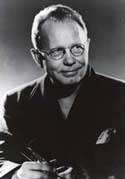
The steps followed in creating these murals involved: making preliminary sketches, then finished drawings in color; enlarging the drawings on brown wrapping paper; transferring the enlarged designs to the stretched canvas panels by pouncing through perforated outlines made with a spiked wheel; and finally painting the canvases with oils. Francis McCray did the enlargements, and Arnold Pyle did all of the color mixing of the oil paints. The color scheme complements the warm tones of the yellowish Minnesota travertine stone framing the murals. According to Wood, a limited palette was used in painting both sets of murals: yellow ochre, cadmium red, black and white; all other colors were obtained by mixing. Blue was used sparingly, only for some of the prairie flowers, so that it would not 'jump out' of the painting since hues appear more intense when placed close to their complement.
A much-needed cleaning and restoration of the murals was completed by conservator Margaret Randall Ash in September 1974. Funding for the project was provided by the ISU Class of 1959 and a matching grant from the National Endowment for the Arts. Under the University's system for regular preservation maintenance of art works, Ivan Hanthorn, head of the Library's Preservation Department, removed the accumulation of remodeling dust in 1988.
